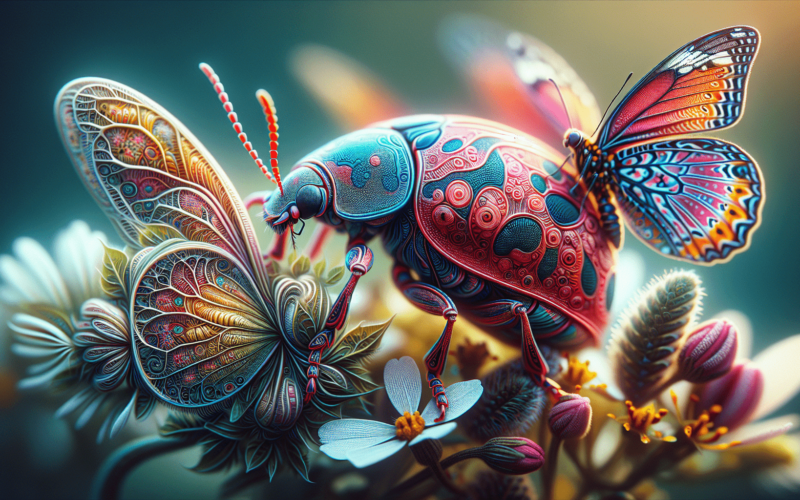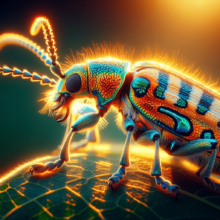Explore the fascinating world of insects and discover their shared characteristics, from their unique exoskeletons to diverse lifestyles. Uncover the commonalities!
What Insects Count As Bugs?

Have you ever wondered what insects you might be mistakenly calling bugs? It’s a fascinating topic, filled with science and everyday observations. Let’s take a closer look at what insects actually count as bugs, clearing up some common misunderstandings along the way.

Understanding the Term “Bug”
Before we can identify which insects count as bugs, let’s clarify what the term “bug” technically refers to. In a scientific context, “bug” refers to a specific group of insects within the order Hemiptera. This includes both true bugs and other members of this order.
The Order Hemiptera
Hemiptera, commonly known as true bugs, is a large order of insects characterized by their unique mouthparts, which are adapted for piercing and sucking. This order is diverse and includes a variety of insects that may not fit your typical idea of what a bug looks like.
Common Characteristics of Hemiptera
- Mouthparts: Hemipterans have specialized mouthparts termed “stylets” that allow them to extract fluids from plants or animals.
- Wings: Many bugs have two pairs of wings, with the front pair being thickened and the back pair being membranous.
- Metamorphosis: These insects undergo incomplete metamorphosis, meaning they do not have distinct larval and pupal stages.
Types of True Bugs
Within the Hemiptera order, various types of true bugs exhibit different characteristics and behaviors. Here are some common categories you may recognize:
| Type of Bug | Examples | Description |
|---|---|---|
| Cicadas | Periodical cicadas | Known for their loud calls during warm months. |
| Stink Bugs | Brown marmorated stink bug | Notorious for the strong odor they emit when crushed. |
| Leafhoppers | Sharpshooters | They suck sap from plants and can transmit plant diseases. |
| Aphids | Green peach aphid | Small, often green insects that can multiply rapidly. |
| Mealybugs | Common mealybug | Covered in a white, waxy substance; they are often found on houseplants. |
Common Misconceptions About Bugs
It’s easy to fall into the trap of calling just about any insect a bug, but several misconceptions abound. You might be surprised to learn that many insects you encounter are not considered true bugs at all.
Beetles vs. Bugs
One of the most common mix-ups is the distinction between beetles and true bugs. Beetles belong to the order Coleoptera, which is entirely different from Hemiptera.
- Beetles: They have hardened forewings (elytra) that protect their membranous hind wings. With over 350,000 species, beetles are among the most diverse groups of insects.
- True Bugs: As mentioned earlier, they have a different mouth structure and body shape compared to beetles.
Flies and Bugs
Another misunderstood category is the family of flies. Flies belong to the order Diptera, and while they may share some visual similarities with true bugs, they have distinct characteristics.
- Flies: They possess one pair of wings and are known for their rapid flight and ability to reproduce quickly.
- True Bugs: They typically have two pairs of wings and are not as swift in flight.
Wasps and Bugs
Wasps are another group you might confuse with bugs. Wasps belong to the order Hymenoptera and, like flies, they have significant differences from true bugs.
- Wasps: They often have slender bodies and are known for their ability to sting. Some species are beneficial pollinators.
- True Bugs: They lack the narrow waist characteristic of wasps and also have distinctive mouthparts for feeding.
Why the Distinction Matters
Understanding the difference between true bugs and other insects can be essential for several reasons. You might find yourself in conversations about pests in the garden, like differentiating between harmful aphids and harmless ladybugs.
Ecological Importance
Bugs play significant roles in various ecosystems. For example, aphids might be pests that harm your garden, while ladybugs can naturally control aphid populations. Thus, distinguishing between these insects can help you manage your space more effectively.
Pest Control Considerations
When dealing with pests in your home or garden, recognizing the type of insect you’re facing can influence your approach to pest control. Different bugs have different vulnerabilities and can require tailored strategies for effective management.
Other Categories of Insects
Now that you’ve gained insight into true bugs, let’s shift focus to some other common categories of insects that often get lumped in with bugs but have their own unique classifications.
Caterpillars and Butterflies
Caterpillars are the larval stage of butterflies and moths, classified under the order Lepidoptera. They undergo complete metamorphosis, changing significantly from the caterpillar stage to the adult stage.
Caterpillar Characteristics
- Body Structure: Caterpillars have soft, elongated bodies and often possess prolegs for gripping surfaces.
- Feeding Habits: They are primarily herbivores, consuming leaves and flowers that can be harmful to certain plants.
Ants and Termites
Ants and termites are both social insects but belong to different orders. Ants fall under Hymenoptera while termites are classified under Blattodea.
Ant Characteristics
- Social Structure: Ant colonies have a highly organized structure, with roles ranging from workers to queens.
- Diet: Most ants are omnivorous and can adapt to varied diets.
Termite Characteristics
- Wood Consumption: Termites are infamous for consuming wood and can cause damage to buildings.
- Symbiotic Relationships: They rely on symbiotic microorganisms to digest cellulose.
Mosquitoes and Other Diptera
Mosquitoes belong to the order Diptera, along with flies. They are known for their bites and role in spreading diseases.
Mosquito Characteristics
- Life Cycle: Mosquitoes undergo complete metamorphosis with distinct egg, larva, pupa, and adult stages.
- Feeding Habits: Female mosquitoes feed on blood while males primarily consume nectar.
How to Identify True Bugs
Recognizing true bugs can be straightforward with a bit of practice. You can use various characteristics to determine if an insect you see is a bug.
Visual Traits to Look For
- Mouthparts: True bugs have long, piercing mouthparts that are easy to spot.
- Body Shape: They often have a flattened body shape that may appear more shield-like.
- Wing Structure: The two pairs of wings, with the front pair being thicker, are another giveaway.
Contextual Clues
- Habitat: True bugs can generally be found in diverse habitats, but some may be more prone to specific settings, such as gardens or fields.
- Behavior: Observe their feeding habits. If they are piercing plants or sucking sap, it’s likely you’re looking at a true bug.
Conclusion
Understanding what insects count as bugs invites curiosity and enhances your natural awareness. You’ve learned about the order Hemiptera, the types of true bugs, misconceptions surrounding the term “bug,” and how to identify them.
So, the next time you’re outdoors or in your garden, you can impress your friends with your newfound knowledge about true bugs and the broader insect world. Remember, not every insect is a bug, but every interaction with these tiny creatures can teach you something new about our ecosystem. Stay curious, and happy observing!



